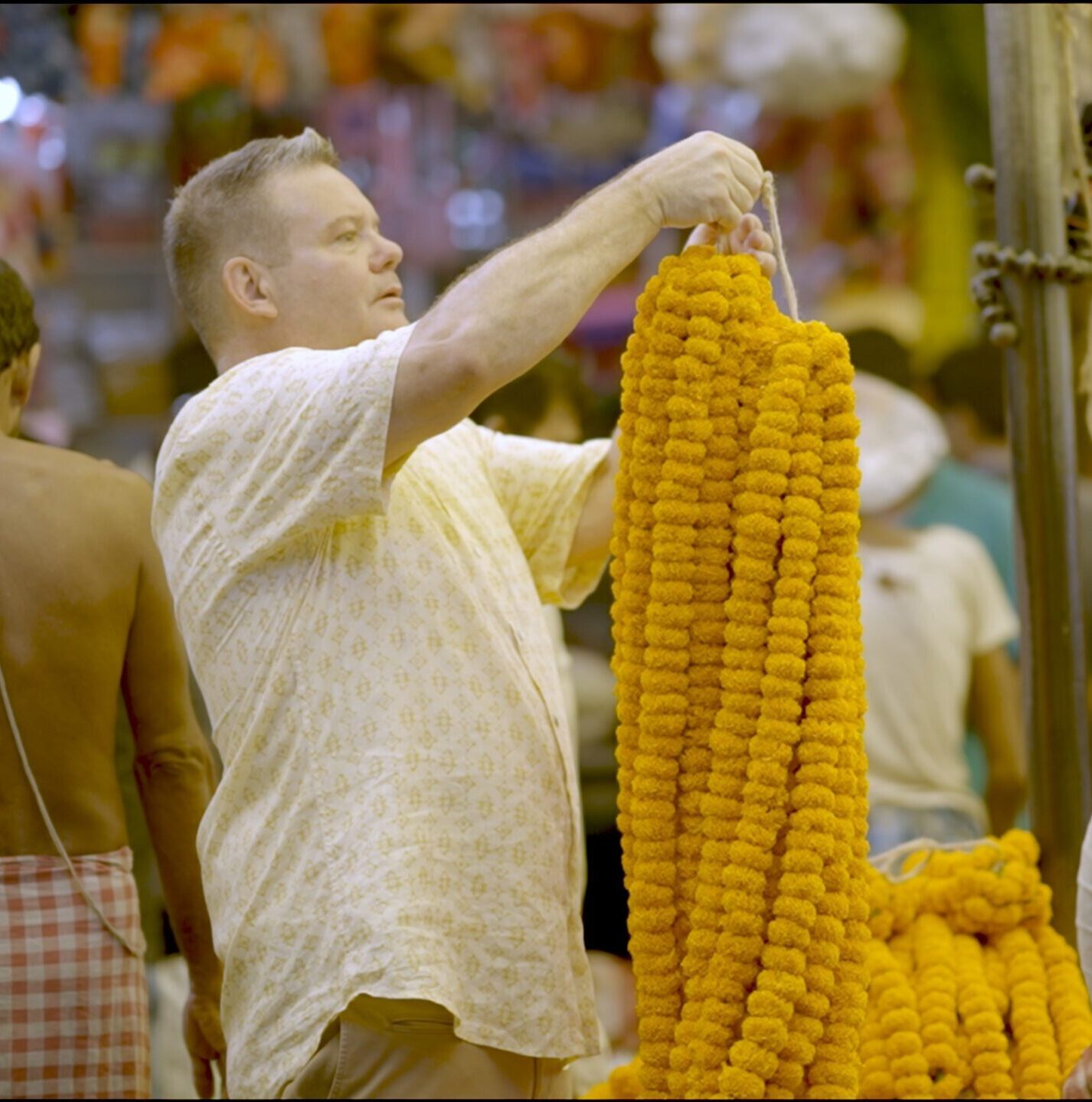MasterChef Australia’s coolest judge has a show on National Geographic right now called India’s Mega Festivals. Gary Mehigan says that Mega Festivals is “not a food show”. As he takes enthucutlet through his best food memories from filming the series, we can clearly see that he most definitely ate his way through all five festivals.
NatGeo’s Mega Festivals, in a nutshell, covers India’s biggest, most auspicious festivals. It’s not a food show. It’s a deep dive into India’s culture, mythology, religion, people, and colour. But of course, with India, and with its festivals, food is inseparable.
I think that’s one of the reasons NatGeo picked me. I’d asked them, “Why wouldn’t you pick an Indian host to carry these stories?” They said, “Because you’re always enthusiastic. You love India. And there’s always a sparkle in your eye when you discover something new. So you can translate this for us.”
Sometimes when you have grown up with these festivals, you forget how beautiful they are. You might forget the details.
At Hornbill Festival, the food was mainly fermented and foraged. I think Nagaland has presented me with the most unusual take on what I consider to be Indian food. There were no spices – no turmeric, coriander, cumin. It was all foraged aromatics, with a lot of ginger – and insects played a big part in that part of foraging.
For me, Hornbill Festival was a magnificent celebration of Naga tribes and Naga life – something unique and unfamiliar to most Indians. Naga’s people are very fashionable, they love dressing up. You see them in their full colour and regalia, and yet they’ve got a pair of Nike shoes on, and they’re an accountant by trade. You have to remind yourself that this expression of culture is something that they’re passing on.
Nagaland is very mountainous and beautiful, and the food is foraged, and not spicy. It’s all wild garlic, aromatic herbs, roots, and fermentation – it has a funky, tasty, different kind of flavour profile. For example, they have fermented bamboo shoots in a beautiful chicken dish, or fermented bean sprouts, or even better, fermented mustard greens (which look like a dark paste that tastes like Australian Vegemite or English Marmite) which give the food a yeasty kind of funkiness.
I ate silk silkworms, red carpenter worms, black hornet larvae (which you pluck from the actual comb). These are very much a treat. People are now very mindful about taking them from their natural environment. So they are very, very expensive.
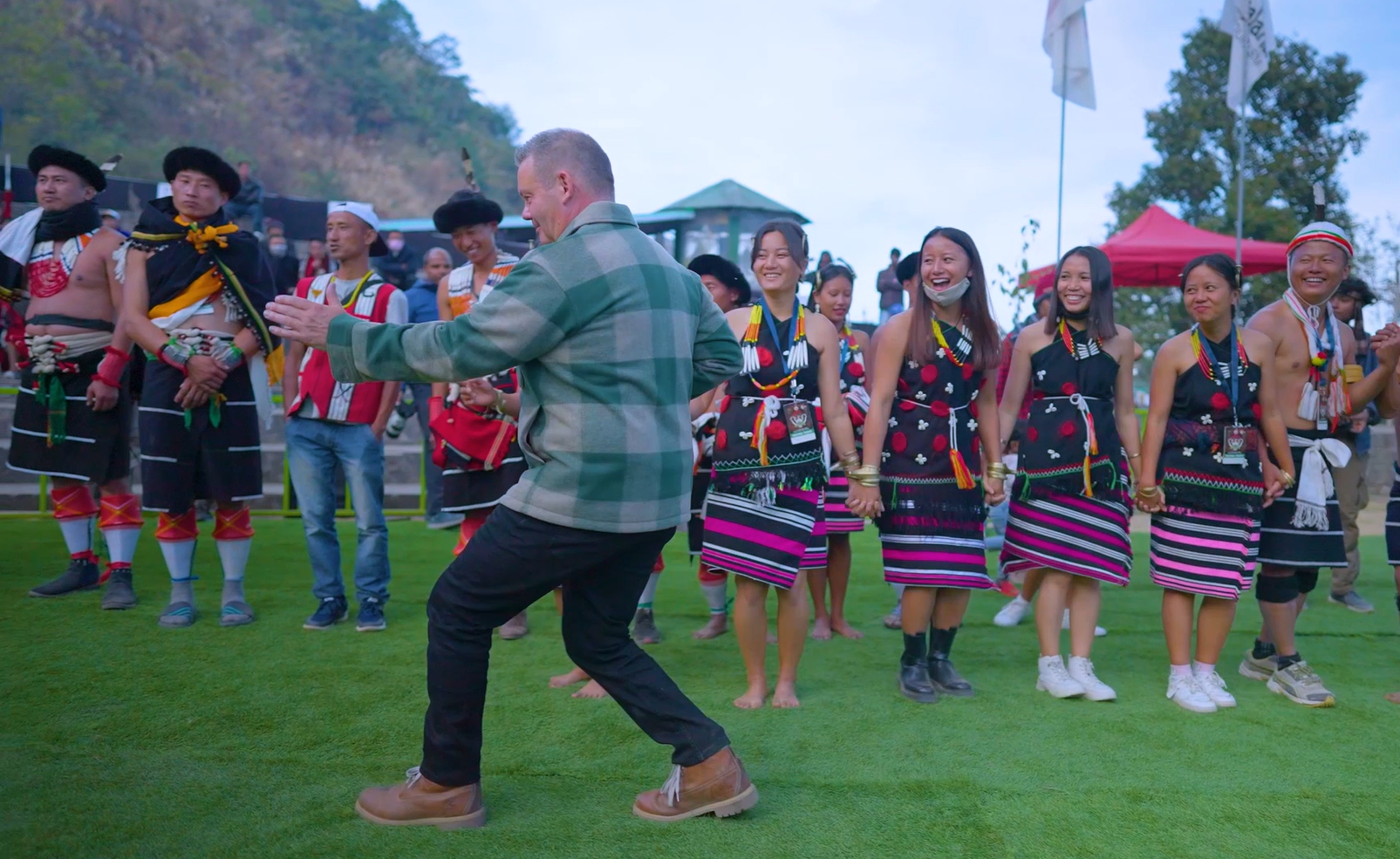
We were sitting around a family table with different types of worms and insects, all cooking at different stages, and also plucking hornet larvae out of the comb at different stages. They’re little plump pupae. The ones that are clean go in one pile. Others starting to develop have a little line, the intestine, go in another pile. Then there are larvae that are starting to look like hornets, that you have to unfortunately dispatch, because they’re almost fully formed and quite dangerous (to eat).
People ask me: how on earth did you eat this? I say: one, we talk about insects as future food and future protein. We’re starting to see this crop up in various forms, powders we can put in smoothies, or in dog biscuits. Two, this is something that I don’t reel back from. I’ve eaten locusts and all sorts of stuff.
Going to the main markets in Kohima, you have tiny frogs, not any bigger than your thumb, in bags. There are mice, rodents, chickens, and other things. It’s very strange watching somebody walk out of a market with these when most of our lives are so sterilised. We go to the supermarket, we buy things in plastic, we don’t see any of the process before that. We don’t know where the chickens are from, we’re conveniently removed from that process.
And yes, I did also eat a whole king chilli. As you can imagine it’s pleasure; pleasure and pain, amplified.
And as a chef, I love the idea of connectedness. I think that if you are prepared to take it out of a bag and eat it, then you owe some thought to where it’s from, and how it came to your table. But people’s reaction still fascinates me when, at a market, they see a water bottle that’s got five or six different rodents inside, or a little bag of frogs, and a chicken that’s still alive being carried out by the feet, and vegetables.
I asked people there: how do you use those tiny little frogs? They said they’re medicinal, and have been for many, many hundreds of years. They make broths from them, but not in a French context or like frog’s legs, Of course then it makes sense.
I try and taste everything; I find that I owe it to the person that’s cooked it, I’ll always have an open mind. For example, if somebody handed me a crispy hornet in the market, they might expect me to go: no, I can’t eat it. I just put my fingers in, grab one and crunch, crunch, crunch. Before I put it in my mouth, I would think it must be delicious to them, and that’s why people eat it. And it is delicious, in context of what they’ve grown up with and the flavours that they’re familiar with. I thought [hornets] were delicious – there was texture, a bit of umami and salt. I just thought: you know what, get over the fact that it’s an insect and eat it and enjoy it. And I did.
And yes, I did also eat a whole king chilli. As you can imagine it’s pleasure; pleasure and pain, amplified.
A lot of Naga cooking and preservation is done over the fire, in the house, over the hearth. So they cook and then preserve it with the smoke. There are little river fish wrapped in leaves sitting in the smoke.They are plucked out and served very simply or over rice. Pork is preserved in the same way. I thought it would almost be impossible in my Western kitchen to be able to reproduce anything that’s close to that kind of depth of flavour and unctuousness.
I’ve got a wall of passionfruit vines, with three vines, in my house, you know, I’ve got three walls with passion fruit leaves and vines, and I’ve never eaten the leaves. I’ve always eaten the fruit. But I never knew that we could eat the leaves. And then I ate Naga pork.
The Naga cooked the pork for hours, and at the last minute, they took a big bunch of passionfruit leaves, put them in the pot, put the lid on, steamed it for two to three minutes. They took the lid off, lifted all the leaves onto a plate and served the pork with it. And I thought: Oh my god, for ten years, I’ve had a wall of leaves that I’ve never eaten.

Durga Puja in Calcutta is all about the sweets, with its wonderful sandesh, and beautiful rasgullas.
Girish Chandra Dey is famous for its sweets. But everybody in Calcutta has got their famous and favourite shop. If you tell them that you go to one, it’s like talking about coffee in Australia. Over there, if you say, “I go to this cafe”, they’ll say, “Oh, the coffee is no good there, you need to go here.” It’s the same with sweets in Calcutta.
We also went to Balaram Mullick. He’s famous for his baked rasgulla, which is delicious – that kind of heady sweetness is next level. In the West now, and certainly in Australia, we’re pushing these really sweet desserts away. Desserts have become more savoury, a little salty, a little aromatic, and less sweet.

My criticism of these kinds of milk-based sweets has always been that they can send you into a euphoric crazy state. But when you’re there in Calcutta, you are celebrating this festival of feminine power with Goddess Durga and Dhaki drummers, and you’re pandal hopping in these magnificent structures, it’s different. Every year, I hear that there is one-upmanship in who can do a better pandal. We went to the Chetla pandal, for example, and it was all biodegradable, natural, sustainable – all of it made from the banana tree and flower, and every part of it was just absolutely magnificent. In this context, those flavours, those sweets are just wonderful.
One of my favourite past-times is (and I don’t know if it’s just Calcutta that just does this to me) – I love simply standing with a chai watching the world go by – seeing the trams rumble past, watching thousands of people, just life happen in front of me, while I take a sip of a beautiful fragrant tea with a little ginger, cardamom, and maybe black pepper.
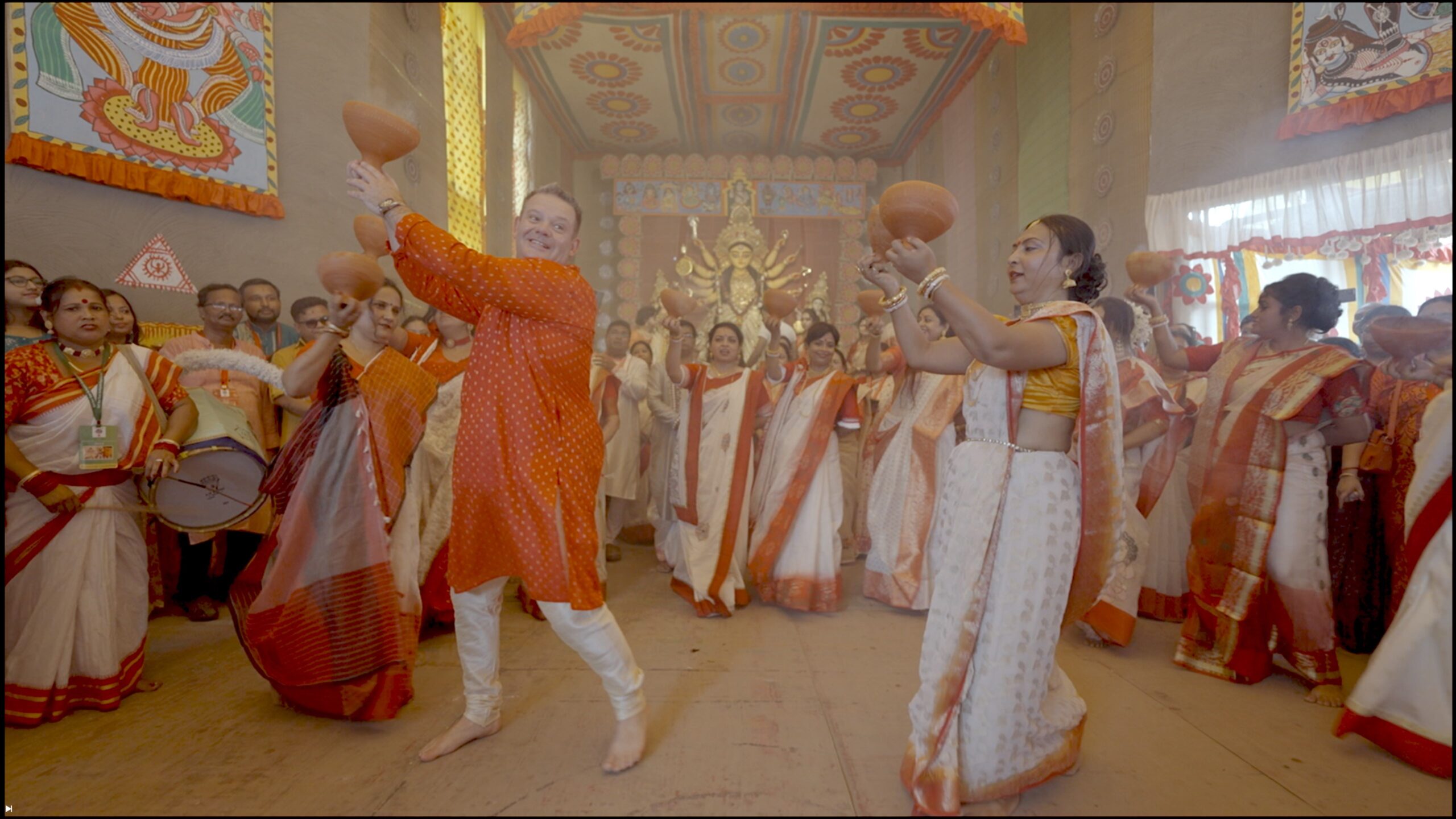
When I went to Calcutta to film Durga Puja, people asked me, “What was your most memorable moment?” I said, it was the truck ride with the idol of the goddess Durga behind us. The sun was setting. The men were in one rickety old truck, the women in another, and there was the smell of incense and smoke, the beating of drums, and watching people. I couldn’t do this in Australia. I’d be strapped in, there’ll be a safety officer with a flag, and they would shut the street down. In India, we’re still lucky enough to have this kind of freedom, where we can just jump on the back of a truck and film and be done with it. The director said to me, “we’ve got what we need, you can jump off now”, and I said, “No, I’m not going anywhere. This is magnificent.”

For Lathmar Holi, I ate, quite delightfully too, vegetarian food for the whole two weeks that I was in Braj Bhoomi. I don’t think one piece of meaty protein passed my lips. It was just a joy to kind of dig into that kind of simplicity, whether it was dal and rice, or bread and aloo tikki, all very familiar things. Australians, we eat too much protein, way too much fish and meat. And there, I called it my “my Holi diet”, I must have shed about five kilos.
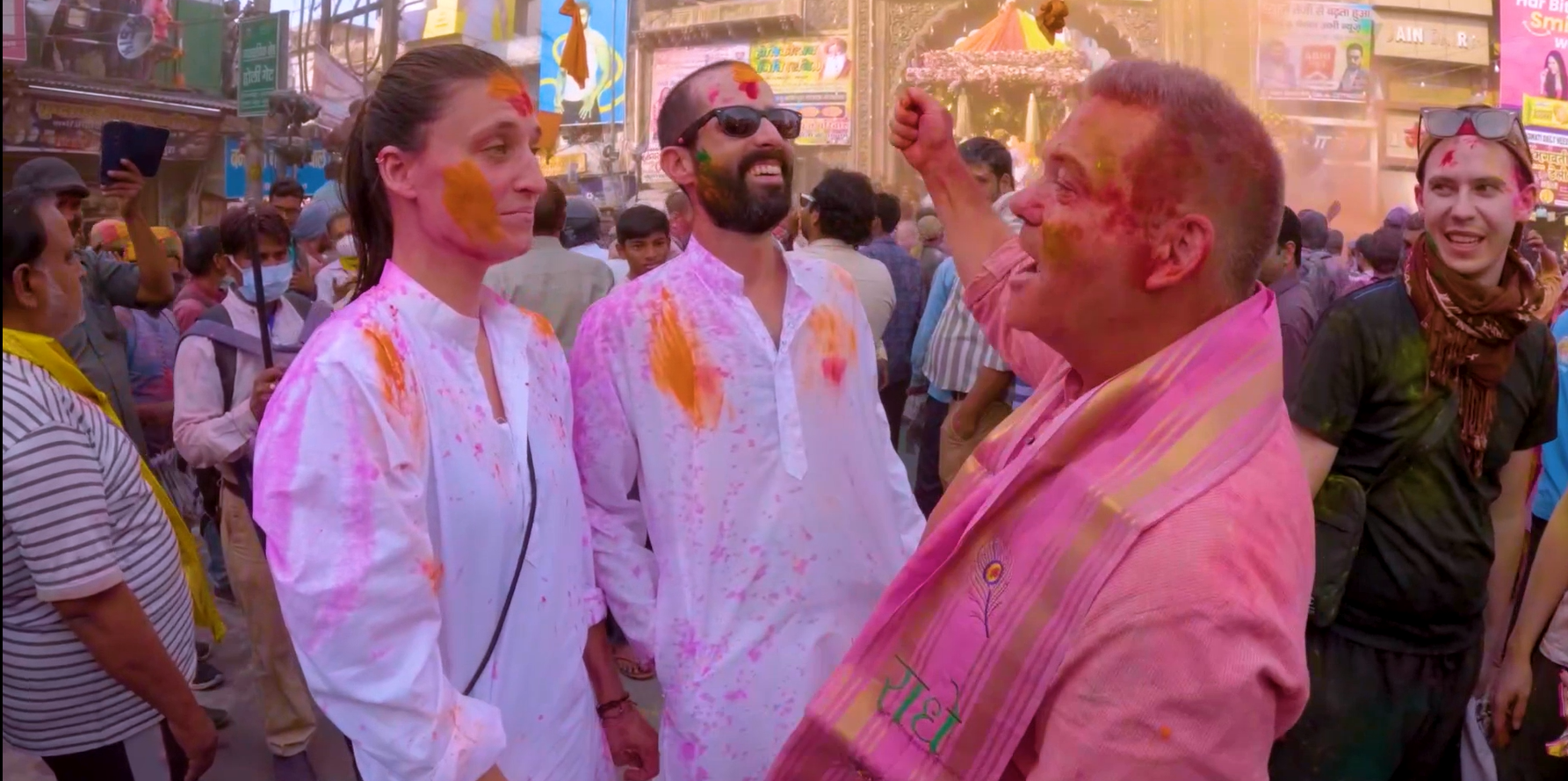
My impression of Holi as a tourist is ‘crazy chaotic’ – a transcendental kind of madness. On the face of it, that’s what it seems to be about. But then, when you dig into it, it’s the generosity, the devotion, the relationship the devotees have with Radha and Krishna that really rings through. It is the community coming together at this period in the calendar, which is so important in Braj Bhoomi.
What really did stand out for me there was the streetfood – simple things like gujiya or dahi gujiya. Every morning I’d have tea and kachori aloo jhol – a thin potato curry with quite a strong flavour of asafoetida. What a perfect way of starting the day, with a breakfast of these!
At the same time, during breakfast one day, I saw an old man – maybe in his mid-80s – cycle up on an old rickety black bicycle, get off his bicycle, order his masala chai and then pull a little bag out of his pocket. Inside was cannabis paste…bhaang. He rolled it in a little ball, put it in his mouth, had a little sip of water, sloshed it around, and drank it. This is a man who has been micro-dosing all of his life. He then drank his tea. I thought, “How amazing! This is not legal in every state, obviously – but in Braj Bhoomi, it is.”
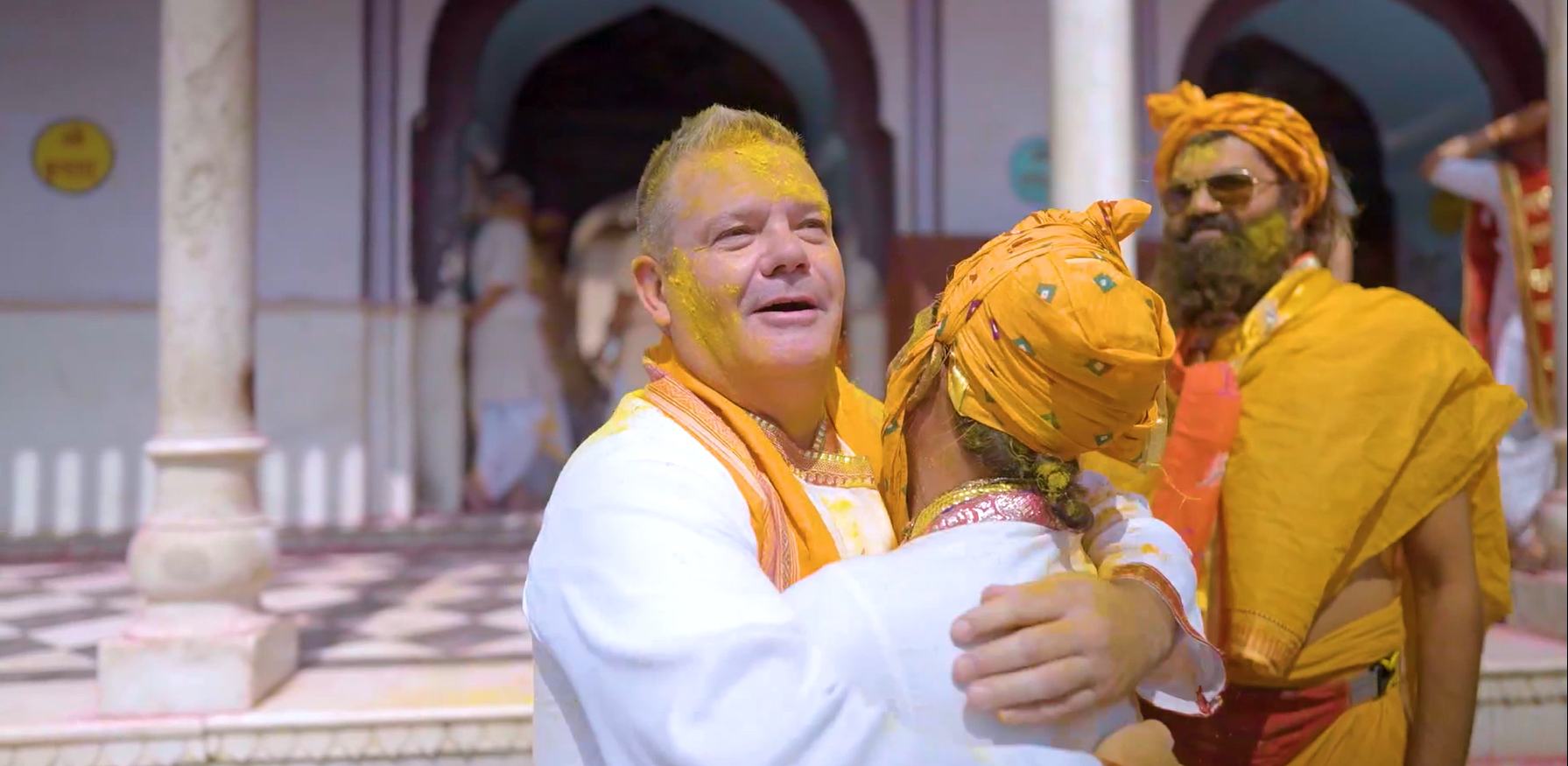

On the other end of the country, there is the simplicity of, the celebration of a harvest – Onam. There is wonderful Kerala rice, with its plump, beautiful grains, and simple vegetarian dishes. The contrast is quite extraordinary.
We filmed at the Thrikkakara Temple, where they feed up to 30,000 people over two or three days. I was watching Prakash, who was the chef, stirring cauldrons of sambar, rasam, thoran, and payasam; and then playing a role in serving that food. Onam is about this beautiful Kerala rice, with 26 little dishes of chutneys and kormas and curries, all sorts of things that you sit and eat, alongside everyone.
For me, Onam and Onam Sadya are about the magnificence of that festival, from a food perspective. It’s about charity, a sense of giving, and paying respects. It’s about being part of a community, which is everything for them – from the poor to the wealthy, from the single to big families.
I remember sitting there, and on one side of me was an obviously wealthy family. I asked them, “Why do you come here?” They said, “Because it’s about us giving back, about us being part of the community.” And then to my other side was just a young single man. And he said, “I come here, because I feel connected. I’m on my own, my family is elsewhere in India. And I come to this temple at this time, to feel that I’m part of where I live now.”

The Onam Sadya is part of this: 3,000 people coming together at one go, and then all of them leaving, and those beautifully biodynamically disposable plates, the banana leaves getting folded up. And then it’s time for the next round, and another 3,000 people come and go. It’s just incredible.
That’s just the eating part of it. The other part of it is the tonnes of vegetables and rice, all being donated to that temple. And hundreds of people are coming in, just to sit, to talk, to prepare the food – for free, just to give something back. It’s very fascinating and moving at the same time.

Eid was all about the feast and the fast. Part of the ceremony of breaking the fast, is to eat a date or two. When you’ve been fasting all day – it shows you how magnificent something simple and sweet can taste.
It sounds silly, but the first sip of water, the first taste of something sweet and textural, it’s a sensory overload. And because you’ve been mindful and thoughtful all day, especially as somebody who loves food, being able to draw into that kind of sensation is wonderful.
What I took away from Eid is how a period of fasting focuses the mind. The purpose of it is to think about how you behave and carry yourself, how you interact with what you believe in, and how you support the people around you.
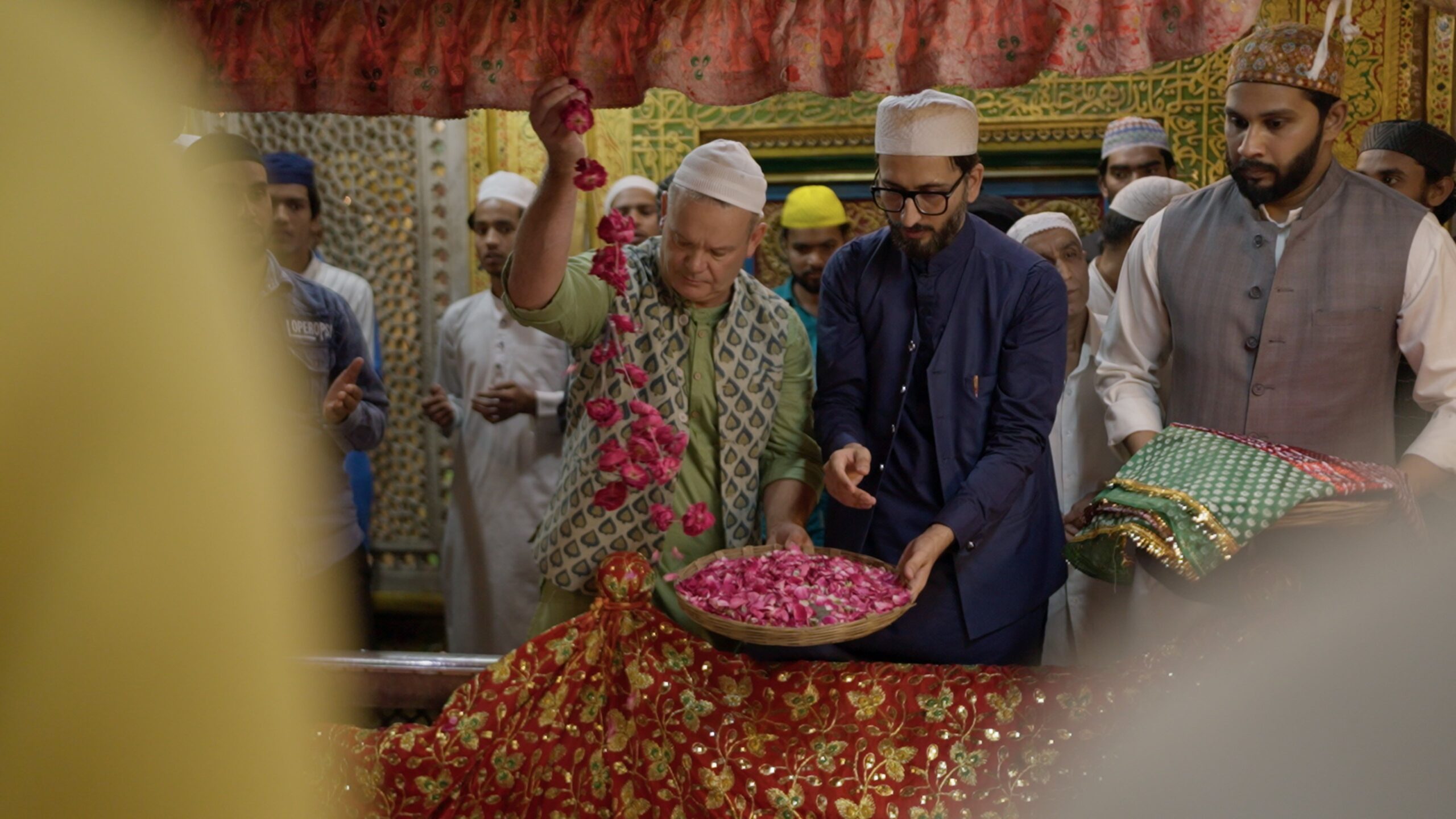
And then there’s the other side of it: The feasting, the breaking of the fast. Or even in the morning, when you’re preparing to fast for the day – the anticipation of no food, no water, of hot weather, of work, of school. The first date, the first taste of its sweet, slightly fibrous texture, and how explosive and how delicious that is. Or how the first sip of water is the best liquid you’ve ever had.
I was lucky enough to be in Delhi during that time. There, at Jama Masjid’s Gate Number One, you can just walk up, and there’s just food everywhere. Beautiful kebabs, and Mohabbat ka Sharbat – which is the watermelon-milk-ice “drink of love” – things like this stick in your mind. The smells that waft off the cooking of those beautiful tender kebabs – these are all just delicious things.
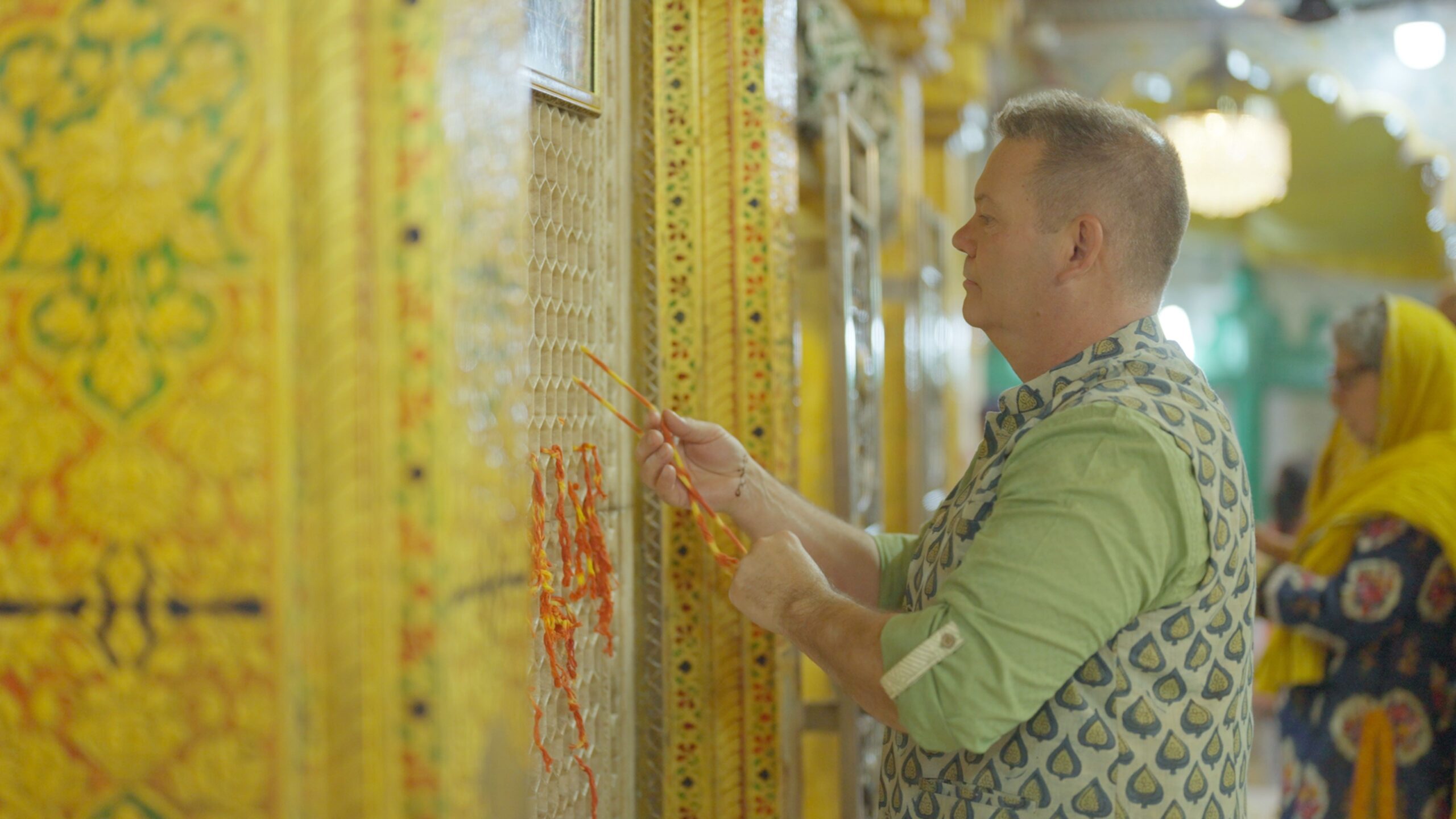

When I come back to Australia from abroad, I think it’s a beautiful country. I came here 33 years ago, and I don’t feel I can live anywhere else.
But then when I come back from India, within a week or two, I miss India. Because I’ve had these very intense, personal experiences there. My phone is full of people’s names that weren’t there before these visits.
A friend of mine rang and said, “I want to go to India. I’m flying into Delhi, where should I go?” And I’m thinking, “Oh my God! It’s too big. The question is: What do you want to eat? What do you want to see? What do you want to feel like? Do you want an intense, overwhelming experience followed by calm, so that you can digest what you’ve just seen?”
How do you pluralise that enchantment, that history?
You know, at the start of the show, we say “5,000-year-old civilisation, 76-year old country…” It is. But how do 1.4 billion people feel Indian? Festivals are the things that bring everybody together, and remind them of whatever they believe in – that there’s a common belief, and a common good in humanity.
And India’s Mega Festivals has given me this opportunity to enjoy India on a level that I never imagined. I’ve been backwards and forwards probably eight or nine times. I’ve been doing two and a half, three weeks at a time. Not all of it has been filming, I’m also doing other bits and pieces. But I have gone from always looking at India as colourful, chaotic, interesting, fascinating – to, totally enchanting. It’s a very different perspective; it’s become very personal.
Watch India’s Mega Festivals here, on Disney Hotstar.
By Chef Gary Mehigan
As told to / edited by Roshni Bajaj Sanghvi

